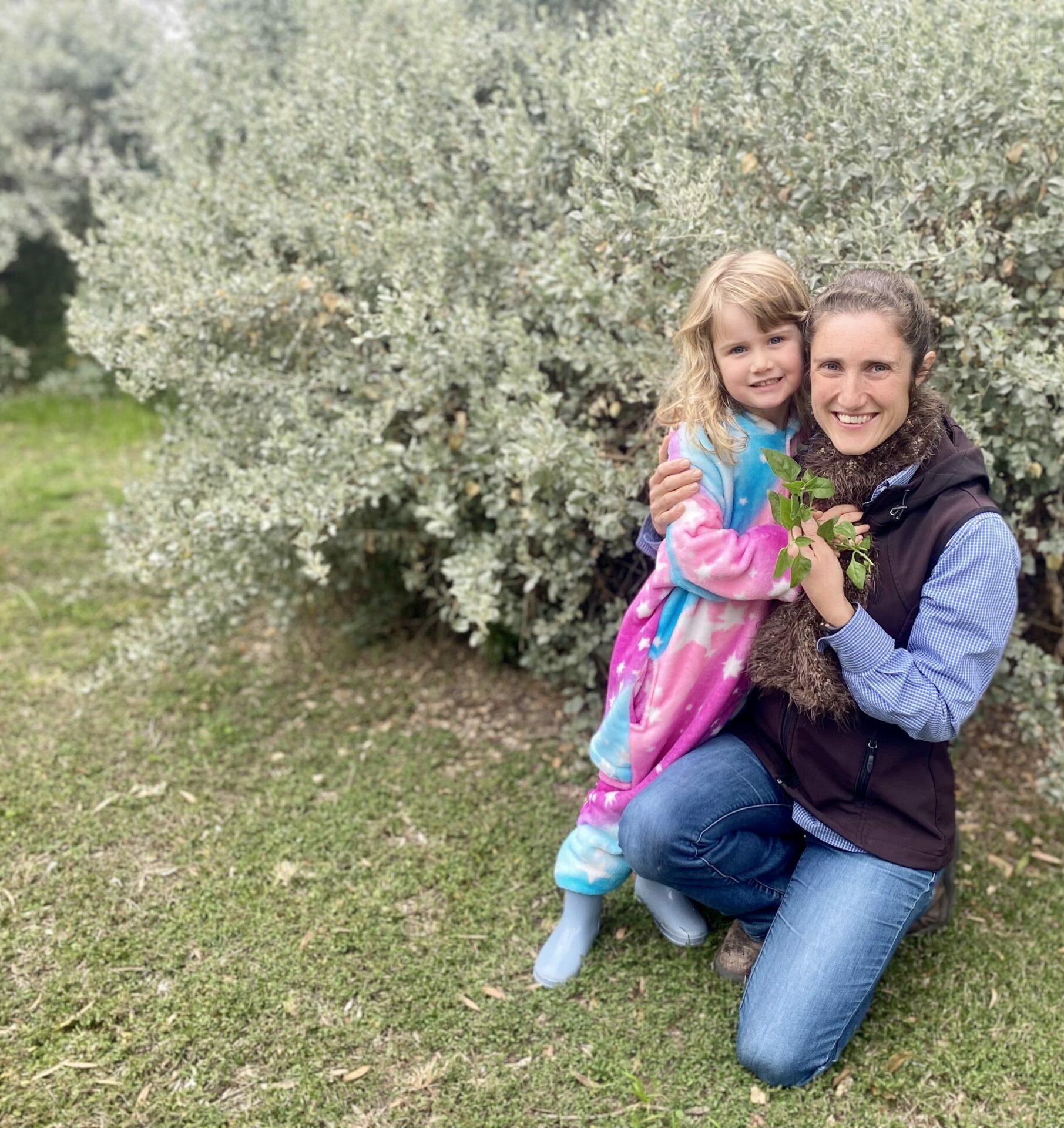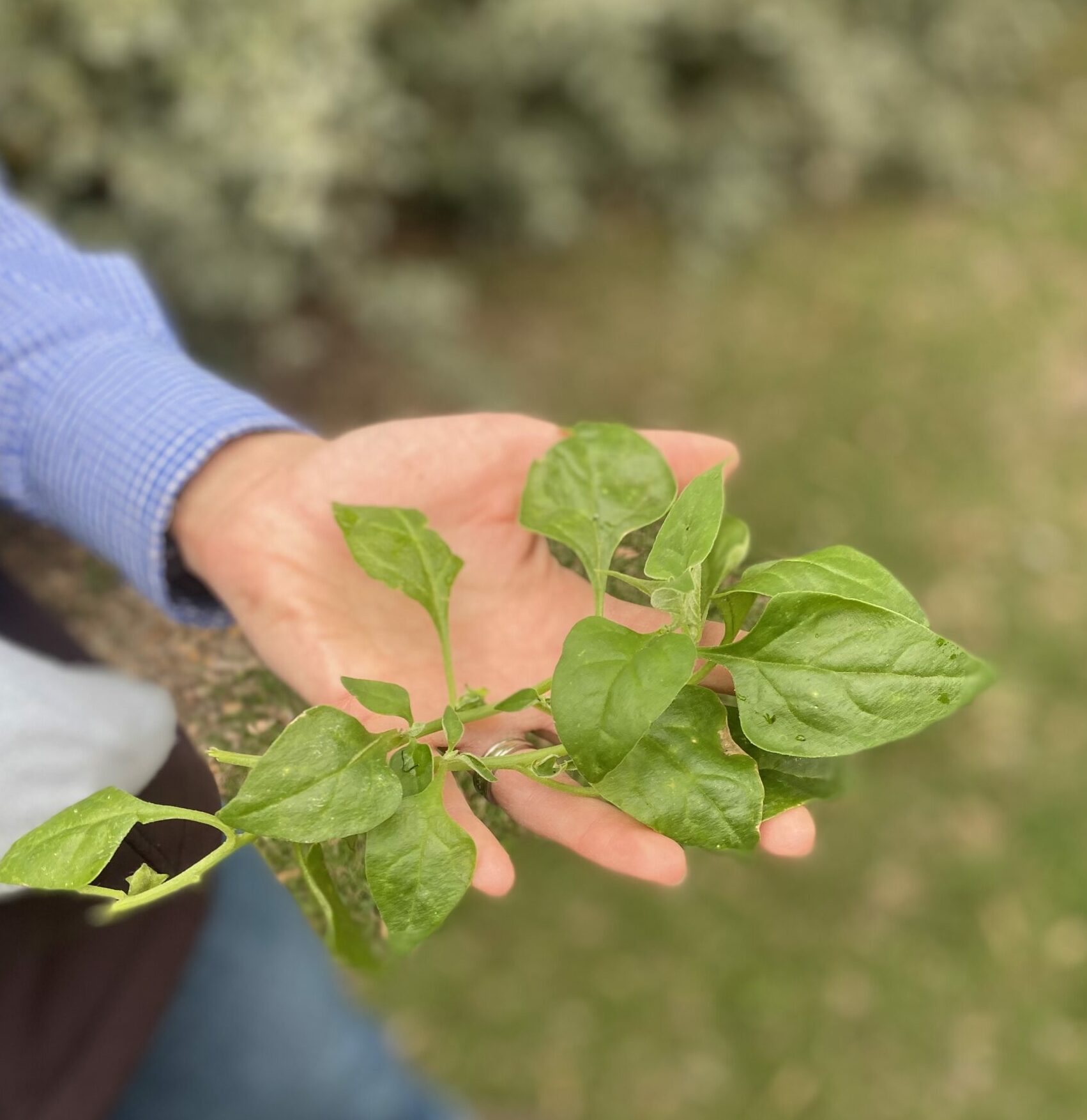In recent months, consumers have seen the price of fruit and vegetables skyrocket and popular produce such as lettuce has been in scarce supply.
The devastating impact of the floods on farmers and their crops has some warning this could be ‘the tip of the iceberg’ when it comes to the rising cost of groceries.
A cheaper and more readily available alternative is being put on the table, and it can be found by paying a quick visit to the humble backyard.
“This country has plenty of native salad greens which have sustained Gomeroi people for thousands of years,” said Dr Angela Pattison, who is currently working on the Sydney University’s Indigenous Grasslands for Grain project.
“With NAIDOC week upon us and the rising cost, or unavailability, of salad greens from the supermarket, there’s no better time to learn how to use the fresh, local, and delicious plants that we have right here.”
Dr Pattison suggests people start their from paddock to plate experience with two species that are relatively easy to find.
“Binamaya or old man saltbush, which has silvery salty leaves.
“The leaves can be eaten raw and I recommend adding them to a mixed leaf salad or salad sandwich at about 10-20 percent.
“Some bushes taste better than others, and it’s a fun experience with the whole family to find the nicest one.
“They are very heat tolerant as a plant, which also means they hold their shape and texture quite well, definitely much better than baby spinach on top of a pizza.
“Galaan.galaan or warrigal greens, sometimes called native spinach.
“It’s a low growing plant with roughly five-centimetre-wide triangular type leaves on thick stems.
“It likes sheltered spots but not too much bare ground.
“There’s plenty of it growing wild at the moment in places the sheep and cows can’t get to, or you can order seed online and grow your own.
“You could do a taste test of raw leaves, it’s mild and crispy, but it’s best blanched if you’re going to eat a meal of it to remove most of the oxalates.
“Great for a stir fry or as a side dish.
“Just last night I blanched some in salted water then used it as the base for a serving of rice pilaf.
“It impressed my guests from Sydney, who pay lots of money in fancy restaurants for this sort of stuff.
“We are very privileged on Gomeroi Country to have greens locally and freshly available.
“And eating them in a time when stuff that is trucked here from the coast is so expensive and reminds us of how connected we are to the land.
“Here we get to connect with local plants and the ancient culture they are part of.
“If you want some help identifying binamaya or galaan.galaan, come find us as we celebrate NAIDOC week.”
Dr Pattison and the Indigenous Grasslands for Grain team will be giving a native grains demonstration at Narrabri’s NDCAS Youth Centre on Thursday and Wee Waa’s Family Fun Day on Friday.
Interest in eating native or homegrown greens comes as the NSW Farmers Association warns hardworking growers across the state are once again being hit by wild weather creating fresh concerns about food supply chains.
In a media release released on Monday, NSW Farmers said producers in the Sydney basin are among those hardest hit with widespread flooding across the region, putting tremendous strain on farmers in the Hawkesbury and Nepean valleys.
However, the impacts of the torrential rain are being felt out into the central west, and vegetable growers in the Hunter Valley have had paddocks drowned for a third time this year.
NSW Farmers president James Jackson said the full fury of nature had been on display this year, and he urged affected communities to stay safe.
“Paddocks are absolutely soaked if they’re not underwater, and safety must be the priority as people move around their farms and regions,” Mr Jackson said.
“The state government has activated the agricultural and animal services hotline, and any primary producers requiring assistance should call 1800 814 647.”
Of course, the call to eat greens from your garden comes with the common-sense warning to make sure you’re aware of what you’re eating and the plants aren’t from an area where they may have been sprayed with pesticides or herbicides.












